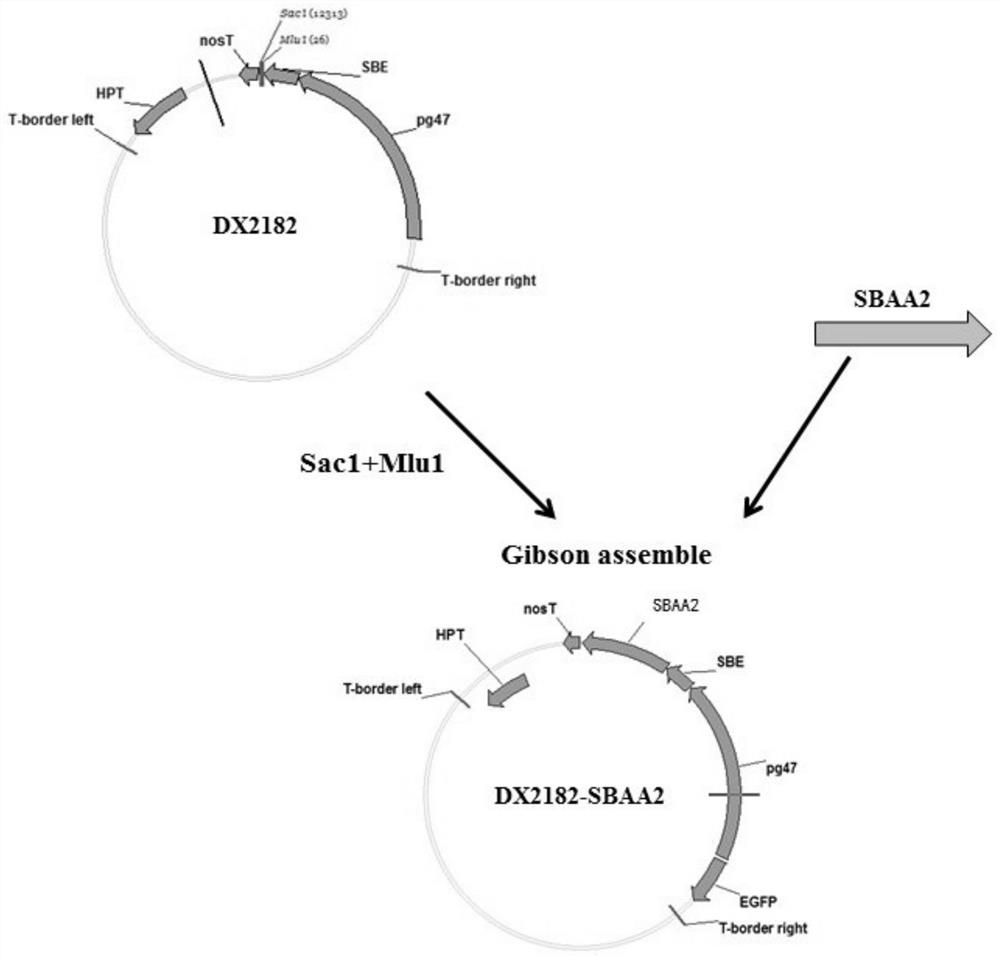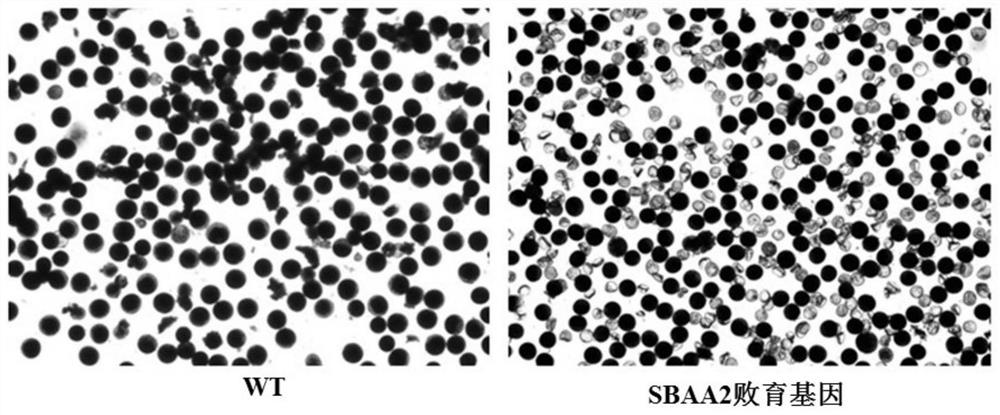Sorghum α-amylase and its encoding gene and application
An amylase, sorghum technology, applied in the application, genetic engineering, enzymes and other directions, can solve the problems of reducing the level of pollen energy metabolism, abortion, insufficient starch accumulation, etc.
- Summary
- Abstract
- Description
- Claims
- Application Information
AI Technical Summary
Problems solved by technology
Method used
Image
Examples
Embodiment 1
[0045] Example 1 Sorghum α-amylase acquisition
[0046] 1. Extraction of sorghum RNA Use the Biozol Reagent method to extract sorghum RNA: weigh 0.1g fresh sorghum young ear tissue, add 1ml Biozol Reagent to mix, let stand at room temperature for 5min; add 0.2ml chloroform for every 1ml Biozol Reagent, shake vigorously for 15s, After the solution is fully emulsified, let it stand at room temperature for 5 minutes, centrifuge at 12,000 rpm, and 4°C for 15 minutes; carefully take out the centrifuge tube from the centrifuge, absorb the supernatant and transfer it to another new centrifuge tube; add an equal volume of isocyanate to the supernatant. For propanol, invert the centrifuge tube upside down and mix thoroughly, let stand at room temperature for 10min, centrifuge at 12000rpm, 4°C for 10min; discard the supernatant, a white precipitate may appear on the tube wall, add 0.5ml of 75% ethanol (prepared with RNase-free water) ) wash, invert and mix, centrifuge at 10,000rpm, 4°C ...
Embodiment 2
[0049] Example 2 Construction of pollen abortion gene plant binary expression vector DX2182-SBAA2
[0050] See the build process figure 1 , the amplified product of Example 1, i.e. primer SEQ ID NO: 7-8 amplified PCR product 1% agarose gel electrophoresis reclaims about 1300bp product, inserts DX2182 (disclosed in Chinese patent CN106434673A, invention name: a kind of plant Anther-specific promoter PCHF15 and its application) in the linear restriction vector of MluI and SacI. The DX2182 vector already contains the PG47-optimized promoter and terminator, and is located on both sides of the MluI and SacI restriction sites, so MluI and SacI digest the vector DX2182, recover the linear restriction vector, and amplify with Example 1 The PCR products were connected in a certain ratio, and finally a binary vector containing the pollen-specific expression cassette of SBAA2 was constructed.
[0051]The 2X ligation kit connects the abortion gene to DX2182, and the 10μl system is as fo...
Embodiment 3
[0052] Example 3 Creation of SBAA2 transgenic rice
[0053] Agrobacterium EHA105 stored at -70°C was streaked on a YEP plate containing Rif (25 μg / ml) + streptomycin (50 μg / ml), and cultured at 28°C. Pick a single colony and inoculate it in 50ml of YEP liquid medium containing the above antibiotics, and shake at 220rpm at 28°C for 12-16h. Take 2ml of the bacterial liquid and transfer it to 100ml (containing the above antibiotics) YEP liquid medium, shake and culture at 28°C and 220rpm until OD 600 = 0.5. Pre-cool on ice for 10 minutes, 5000rpm 10min (refrigerated centrifuge pre-cooled to 4°C). Wash twice with sterile deionized water (10ml each time), wash once with 10% glycerol and dissolve in 3ml 10% glycerol. Take 100 μl of competent cells and add 1 μl of the DX2182-SBAA2 plasmid obtained in Example 2, and transform by electroporation at 2.5KV. Culture on a YEP culture plate containing kanamycin, rifampicin and streptomycin, select positive clones, and use DX2182-SBAA2 c...
PUM
 Login to View More
Login to View More Abstract
Description
Claims
Application Information
 Login to View More
Login to View More - R&D
- Intellectual Property
- Life Sciences
- Materials
- Tech Scout
- Unparalleled Data Quality
- Higher Quality Content
- 60% Fewer Hallucinations
Browse by: Latest US Patents, China's latest patents, Technical Efficacy Thesaurus, Application Domain, Technology Topic, Popular Technical Reports.
© 2025 PatSnap. All rights reserved.Legal|Privacy policy|Modern Slavery Act Transparency Statement|Sitemap|About US| Contact US: help@patsnap.com



